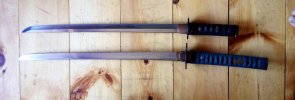- Joined
- Nov 26, 2014
- Messages
- 63
i have watched a lot of videos on how to sharpen a kukri and there are a bunch of different ways that all seem to work. but may i ask why you couldnt just use on those these?
http://www.smithsproducts.com/product/jiff-v-sharp-knife-and-scissions-sharpener/
i have stones, files, and a bunch of other sharpening tools, but i suck at using them. i am decent with the above tool though...
http://www.smithsproducts.com/product/jiff-v-sharp-knife-and-scissions-sharpener/
i have stones, files, and a bunch of other sharpening tools, but i suck at using them. i am decent with the above tool though...

